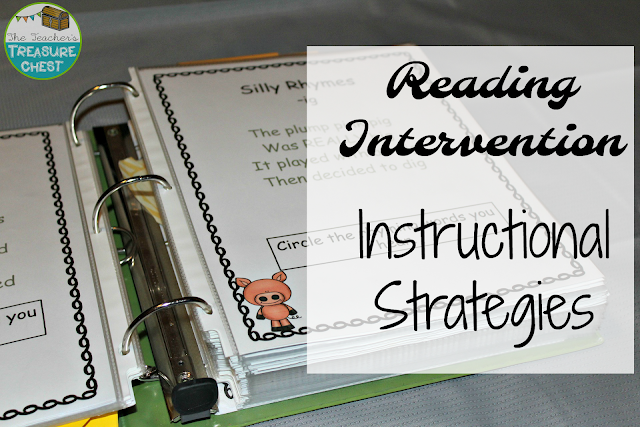Reading Intervention Activities
Hey friends! Are you tired of searching high and low for reading intervention strategies for your struggling readers? I was too! So I teamed up with my amazing friend Karen Mallard to bring you a post about running records and reading intervention activities for the classroom.
The question we hear so much is, where do
I start with my reading intervention program? The answer is simple:
assessments. Reading intervention must start with assessment. Teachers must know what areas students are struggling with so they can meet their needs
effectively.
Once you assess students, use the data to
identify those students who are at risk. Then, be sure to monitor their progress often. Struggling
readers should be assessed at least bi weekly, if not weekly.
After you’ve assessed the student, it’s
important to analyze the running record. Running records give the teachers so much information.
Self-Corrections in Struggling Readers
A topic that we have been discussing at
school recently has been self-correction rates.
Some teachers asked for guidance so I gave them some guidelines. I also think that if a student has a 1:1
ratio but has more than 5 errors that were self-corrected the child is working
way too hard. Analyze the errors and
look at the information the student is neglecting. Is it a weakness in decoding left to right,
or a lack of high-frequency word vocabulary?
Address the weakness so the child becomes a more accurate and confident
reader. Students who struggle with sight words or high frequency words, can practice those daily using sight word games! These make their learning fun and the kids enjoy them so much!
Self-Correction Rates
1:1 Excellent
1:2 Good
1:3 Fair
1:4 and higher show that the student
isn’t monitoring consistently.
Is the
student noticing that it doesn’t sound right,
make sense, or look right?
Is the
student self-correcting with only one source of
information and ignoring the others?
The goal is to be flexible and to use all
of the cues/information together. (Meaning-pictures, Structure-language,
Visual-letters.)
Errors In Reading
Errors in reading are a common issue.
It’s important to look for patterns with errors. Are students only having
errors with proper nouns? Do they struggle with reading all the way through the
word? Think about why you think the student is making the error. This is
crucial to figure out how to drive the instruction.
In the primary grades, students sometimes
learn a strategy I call “Guess and GO”. These students are looking at the
beginning of the word, and guessing on the rest. They do not read through the
middle of the word.
Sometimes students will have errors
similar to guessing, like this:
was/saw
here/her
us/use
Whenever students have these errors, I
show them both words. I ask the students if they can see how the words are
different and how they are the same. We discuss the meaning of each word and then use instructional strategies from our intervention
binders to help fix it. We use these instructional strategies in our small group instruction to help students make progress in their independent reading levels.
In our binders, we've included running records that you are analyzed to help you learn how to properly use running records as a data point for your students. This has been so helpful to so many of our colleagues!
Through the intervention binders , students practice skills that they are weak in every single day. This gives students the opportunity to practice the instructional skills they need in order to help close their achievement gap. If you have questions about how often you should do reading intervention, ask me over here.


































